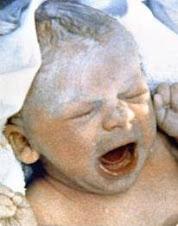He would not say on Monday whether any
of the women had succeeded. In all, nine women in Sweden have received new
wombs since 2012, but two had to have them removed because of complications.
The women received wombs donated by
their mothers or other close relatives in an experimental procedure designed to
test whether it's possible to transfer a uterus so a woman can give birth to
her own biological child. The women had in vitro fertilization before the
transplants, using their own eggs to make embryos.
"We have already begun transferring
embryos into four of the women and plan to make attempts with the others when
they are ready," said Dr. Mats Brannstrom, a professor of obstetrics and
gynecology at the University of Goteburg, who is leading the research.
Brannstrom predicted that three or four
of the seven women might successfully give birth.
"One or two more will perhaps get
pregnant and miscarry, and one or two won't be able to get pregnant," he
said.
There have been two previous attempts to transplant a womb — in Turkey and Saudi Arabia — but both failed to produce babies. Doctors in Britain and Hungary also are planning similar operations, but using wombs from women who had just died.
Brannstrom said any woman in the study who does get pregnant will be on a low dose of drugs to keep from rejecting the transplanted womb and will be monitored as a high-risk pregnancy.
The transplants are intended to benefit women unable to have children because they lost a uterus to cancer or were born without one.
Some doctors said women who got pregnant with a new uterus would have to be watched carefully for how the womb progresses throughout pregnancy.
"There are questions about how the physiological changes in the uterus will affect the mother and whether the transplanted uterus will be conducive to a growing baby," said Dr. Charles Kingsland, a spokesman for Britain's Royal College of Obstetricians and Gynaecologists and a gynecologist at Liverpool Women's Hospital.
In a study published last week, Brannstrom and colleagues described the procedures used to transplant the nine wombs and said there were "mild rejection episodes" in four patients.
He said the transplanted wombs would be removed after a maximum of two pregnancies.
Other experts called it a promising step
but said it would be crucial that babies get enough nutrients from the mother's
blood supply.
"We really don't know if the blood
flow to the uterus will increase and adapt in the same way," as in a
regular pregnancy, said Dr. Yacoub Khalaf, director of the Assisted Conception
unit at Guy's and St. Thomas' hospital in London.
"It is a good sign they have done
the (embryo) transfers," Khalaf said. "But a live birth will be the
best validation that this works."








No comments:
Post a Comment